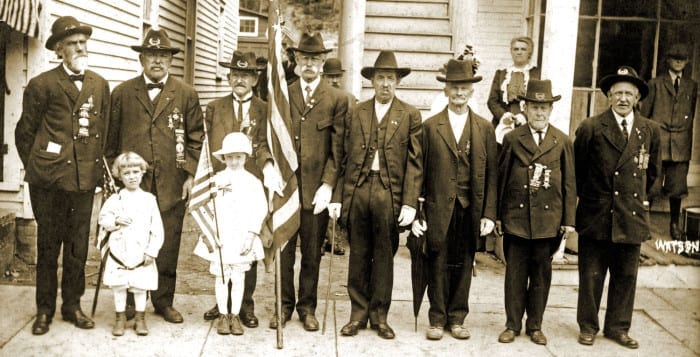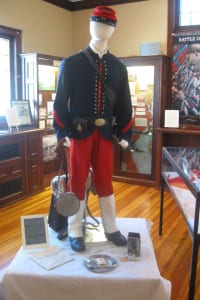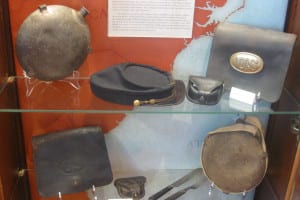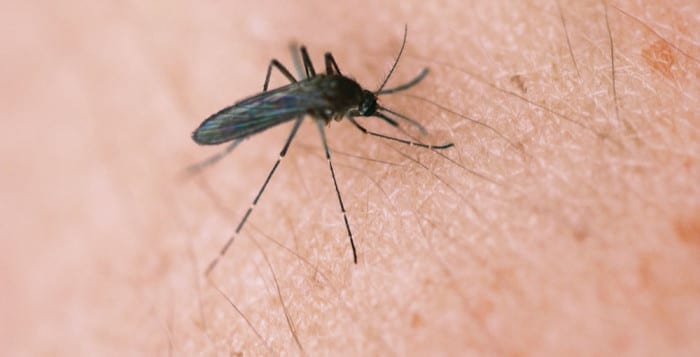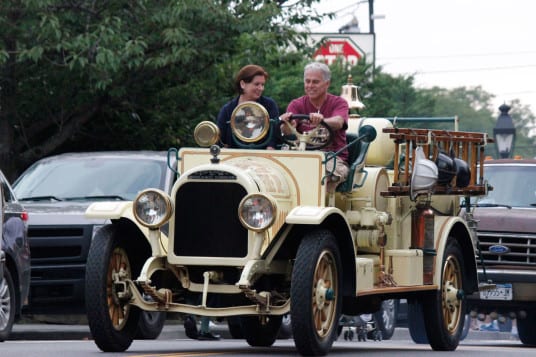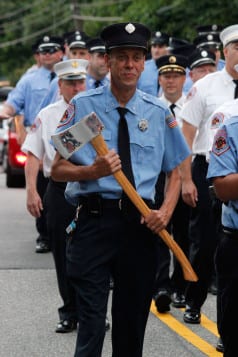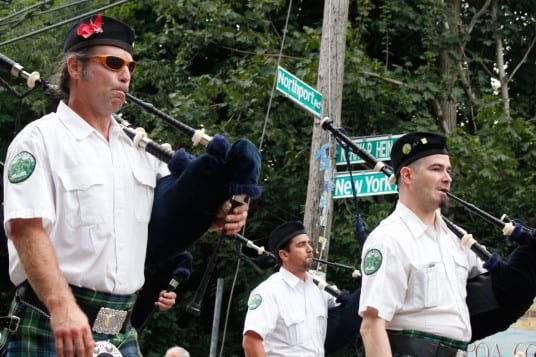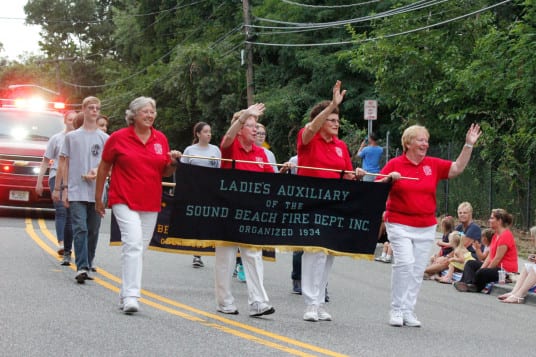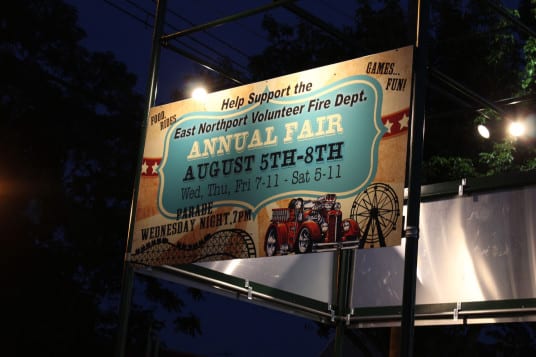By Steve Mosco
Thousands of years ago, mankind crawled out of its primordial origins, stood upright and decided to quit choking down chunks of raw flesh. These prehistoric freethinkers put meat to heat, creating a ritual that continues to compel the carnivore spirit in an endless quest for the slow-smoked supernatural.
The ritual is barbecue and it goes well beyond hot dogs and hamburgers hastily seared on a dirty backyard grill. It is a culinary style reserved for the meticulously obsessive chef, as cooking times can range from several hours to more than half a day and doneness is measured in burnt ends and smoke rings.
“Smoking is such
an important
cooking technique.
In barbecue, it might be the most important.” — Eric Rifkin, Bobbique in Patchogue
Meat, time, heat and smoke; there are no secrets in barbecue, just obsession.
And the obsession is heating up on Long Island. A decade or so in the past, the number of barbecue joints on the Island could be counted on one sauce-stained hand. Now, slabs of brisket, piles of pork, racks of ribs and links of sausage are readily available in napkin-destroying glory in a growing number of eateries.
To travel the Island seeking out these restaurants is to explore the diverse nature of barbecue itself.
Barbecue is a fundamental element in America’s cooking culture; it is the only truly American cuisine, and like everything else purely American, its form is contingent on its regional influences.
There’s Memphis-style pit barbecue, which is high on the hog in rib and pulled form, served in a tangy, thin tomato-based sauce. The Carolinas offer two distinct forms of ‘cue, with North giving us spice and vinegar basted pork and the South opting a sauce that is more mustard based. Kansas City style cooks its meats super slow and super low over hickory wood, served with a thick and sweet molasses sauce. In Texas, meat is king, as dinosaur-sized beef ribs are served alongside a heaping portion of brisket and sauce is usually an afterthought.
St. Louis Spare Ribs
Ingredients: 4-5 pounds pork back “spare” ribs; Your favorite dry rub; Mustard; Your favorite barbecue sauce; Wood chunks or chips for added smoke (optional)
Directions: To start, choose some fresh pork spare ribs. Preheat your grill to 225-250 F. Wash and dry ribs, then trim and remove the membrane. Now rub in mustard on all sides. Lightly apply dry rub seasoning to both sides of the slab. Let stand for 15-30 minutes. Allow ribs to come to room temperature just before placing on the grill. Place a water or basting pan on the grill or within the coals for added moisture (optional). Barbecue at 225-250 F opposite coals with closed grill lid for 3-4 hours. Mop the ribs several times. To keep from overcooking, remove the racks when they pull apart easily, with meat still attached to the bone. Serve with your favorite barbecue sauce.
Barbecue on Long Island is trending toward an amalgamation of styles, with professionally trained chefs taming fire to give the public what it wants.
Bobbique in Patchogue (70 W. Main St.) specializes in Memphis-style pit barbecue. For chef Eric Rifkin, it all started with an inspirational trip to Memphis, Tennessee. With a menu that includes such staples as St. Louis-style ribs, brisket and pulled pork, as well as barbecued salmon and shrimp, Rifkin’s slow-cooking technique utilizes an authentic, soulful southern charm that acts as a great equalizer at mealtime.
“Barbecue is a communal experience,” says Rifkin. “People come together, roll up their sleeves, feel, touch the meat. It’s become a comfort thing. It’s a ‘talk to the table next to you’ kind of meal.”
Rifkin is a classically trained chef with an impressive resume. In transferring his refined talents to the decidedly less polished cooking style of the pit, Rifkin developed his own art of smoke, one of barbecue’s essential elements.
“Smoking is such an important cooking technique. In barbecue, it might be the most important,” he says. “The smoke imparts flavor into cuts of meat that were at one time less desirable. The right kind of smoke used the correct way changes everything.”
Another chef blurring the lines between barbecue boundaries is Jonathan Levine, whose restaurant Smoke Shack Blues opens in Port Jefferson this September. A chef with an origin story that includes fancy cuisine of the French-Italian lineage, Levine’s career trajectory was altered by traveling through the Carolinas and Texas during a family vacation.
It was during that trip he experienced the powerful effects of low-temp cooking combined with smoke. The science of low and slow with smoke melts the fat within, and that translucent succulence bastes the meat from the inside while the outer bark encases the juices until it’s ready for the cutting board.
“Everything is kept inside the meat,” says Levine. “The same cut of meat that is unremarkable cooked one way is made incredible when cooked in true barbecue style. All of those juices rendering inside for 14 hours or so makes for a completely different eating experience.”
Levine recently gave locals a taste of what to expect from his forthcoming restaurant at multiple events at Benner’s Farm in East Setauket. He offered pork shoulder for Western Carolina style pulled pork, smoked barbecue chicken, pork ribs and even tins of his own barbecue dry rub.
“It’s so easy for a chef to toss his meat in a sauce,” he says. “But with a dry rub, there is really nowhere to hide. It is all about the meat.”
Molasses BBQ Chicken
Ingredients for glaze: Cider vinegar — 1⁄4 cup (4 tablespoons); Brown mustard — 1⁄2 cup (8 tablespoons); Molasses — 1 cup (16 tablespoons); Salt — 4 teaspoons; Fresh black pepper — 2 teaspoons
Other Ingredients: Chicken — 6 pounds; Salt — to taste; Pepper — to taste
Directions: Preheat grill. In a pan pour in cider vinegar, add mustard and mix. Add in the molasses, mix well, season with salt and pepper. Place the pan on hot coals and allow to simmer. Place the chicken pieces over indirect heat on grill and season with salt and pepper. Cover and grill at 350 F and cook for about 1 hour. After 20 minutes of cooking, brush the chicken with the glaze after every 15 minutes. When about to be done, sear over direct heat for few minutes.
The nature of Long Island’s cross-cultural barbecue style has even influenced a man who didn’t require an illuminating trip to America’s smoked-meat meccas. Lloyd Adams is a Texan through and through. A marriage brought him to Long Island in 1995 and by 2003 he started Laura’s BBQ Shack, a traveling Texas-style barbecue smoker that rolls into events like a traveling carnival of meat.
After a few years of struggling to find a foothold in the Island’s barbecue scene, Adams’ big break came at an event hosted by the Holbrook Chamber of Commerce. Long before many of the Island’s barbecue restaurants were even a gleam in a chef’s eye, Adams was schooling locals on true barbecue.
“I spent a lot of time explaining it as a cooking method,” says Adams. “I had to explain that the meat might be pink, but it is not raw. That pink you see is from the authentic smoke and the low-temperature cooking.”
But as barbecue continues to marinate and mature on the Island, people are becoming savvier; they are learning to embrace those pink smoke rings and burnt ends, according to Adams.
“People are much more educated about barbecue these days,” he says. “People aren’t going for it multiple times a week like they might Chinese or Italian, but it is growing.”
The ever-evolving Long Island barbecue scene will likely continue to expand to new flavor territories as each new generation cuts through the smoke and slides up to flames. Even in Adams’ own enterprise, the Texas-strong style has morphed to include much more pork than is usually found on slabs in the Lone Star state.
That’s merely one example of the ever-changing story of barbecue culture. And on Long Island, this quintessentially American style of making meat better will continue to raise its flavor profile.
“Whether you are cooking beef or pork or using one style or another, it is important to take pride in your barbecue and always be your own worst critic,” says Adams. “People here are willing to listen and to learn and I suppose that’s a good sign.”


